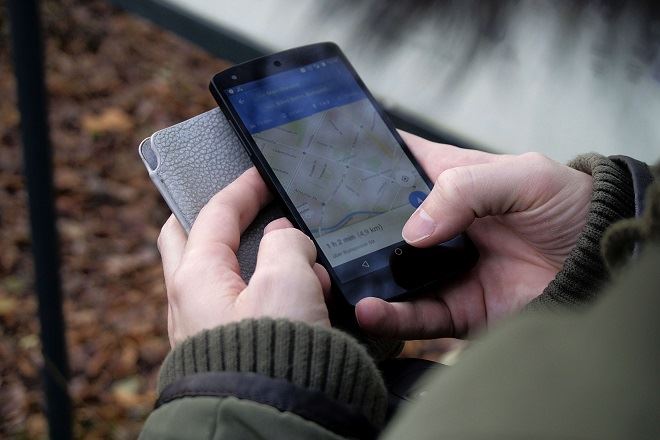Leveraging mobile tools to streamline bookings and confirmations
Mobile tools now play a central role in simplifying bookings and confirmations across transit, flights, and daily commuting. Reliable mobile apps consolidate schedules, monitor connections, and provide real-time updates for itineraries, routes, and transfers. This helps travelers and logistics teams reduce friction, coordinate fares and accessibility needs, and maintain clearer communication with airports and local services.

How do mobile tools improve mobility and commuting?
Mobile tools combine real-time transit data, route planning, and personalized notifications to improve everyday mobility and commuting. For commuters, apps reduce uncertainty by displaying live vehicle locations, estimated arrival times, and alternate routes when delays occur. Integrated ticketing and digital passes let users complete a fare purchase and receive an instant confirmation on their phone, removing the need for paper tickets. For public and private operators, mobile tools help balance capacity and enable queuing or reservation features that smooth peak-period demand.
How can apps manage flights, airports, and schedules?
Flight-focused mobile tools aggregate schedules, gate information, and airport alerts to keep travelers informed about check-in windows, boarding changes, and baggage procedures. When linked to user itineraries, these apps send push notifications for schedule changes, connection reminders, and terminal transfer guidance. Many airline and aggregator apps also allow in-app booking updates and instant e-ticket confirmations, which reduces time spent reconciling itineraries across email and calendars and supports smoother transfers between flights or between airports and onward transit.
How do itineraries, routes, and navigation integrate?
Effective mobile tools merge multi-leg itineraries with turn-by-turn navigation and public transit schedules, enabling coherent guidance from origin to final destination. Users can view routes that combine walking, transit, rideshare, or flights within a single itinerary and receive stepwise instructions for each segment. This integration preserves context for connections and helps avoid missed transfers by estimating walking times between platforms, curating timed reminders, and suggesting alternate routes when disruptions occur.
How do mobile tools support connections, transfers, and accessibility?
Mobile platforms improve connections and transfers by flagging critical timing, gate proximity, and required documentation. Accessibility features—such as step-free route options, auditory navigation, or larger map fonts—help travelers with mobility needs plan realistic transfers at stations and airports. For operators, mobile confirmations can include accessibility requests or assistance codes, ensuring that ground staff and transit personnel receive relevant information before arrival, which strengthens consistency across services.
How can mobile tools aid logistics, fares, and booking?
Mobile booking tools are increasingly used by logistics coordinators and individual travelers to manage fares, confirm reservations, and reconcile multiple bookings. Consolidated fare displays let users compare ticket classes or transit passes while maintaining a single confirmation record. For logistics, mobile tools support proof-of-delivery updates and route adjustments, reducing idle time and improving last-mile coordination. Clear digital confirmations and timestamps help reduce disputes over bookings and enable easier refunds or changes when policies allow.
What are typical costs and provider comparisons?
Many mobile booking and itinerary tools are free to download; actual travel costs depend on service type and route. The table below summarizes representative providers and general cost expectations for their primary services. These are illustrative, not exhaustive, and intended to show how app access and service fees typically align with travel expenses.
| Product/Service | Provider | Cost Estimation |
|---|---|---|
| Flight search & booking app | Google Flights | App free; typical domestic fares $100–$400, international $400–$1,200 (varies by route and season) |
| Flight aggregator & price alerts | Skyscanner | App free; fares similar to other aggregators; price alerts free, commissions may apply through partners |
| Price-prediction and booking | Hopper | App free; fare ranges vary widely; may recommend booking windows to reduce fare risk |
| Multi-modal itinerary planner | Rome2rio | App/website free; shows train/bus/flight options; actual fares depend on carrier |
| Public transit and ticketing | Local transit apps (city providers) | App often free; single-ride fares typically $1–$5 in many cities; passes vary by region |
Prices, rates, or cost estimates mentioned in this article are based on the latest available information but may change over time. Independent research is advised before making financial decisions.
Conclusion
Mobile tools that unify booking, confirmations, schedules, and navigation can reduce friction across transit, flights, and commuting scenarios. By centralizing itineraries and offering real-time updates, these apps support better transfers, clearer fare management, and improved accessibility accommodations. Users and operators should combine app capabilities with local service information to ensure accurate planning and adapt to price or schedule changes.





